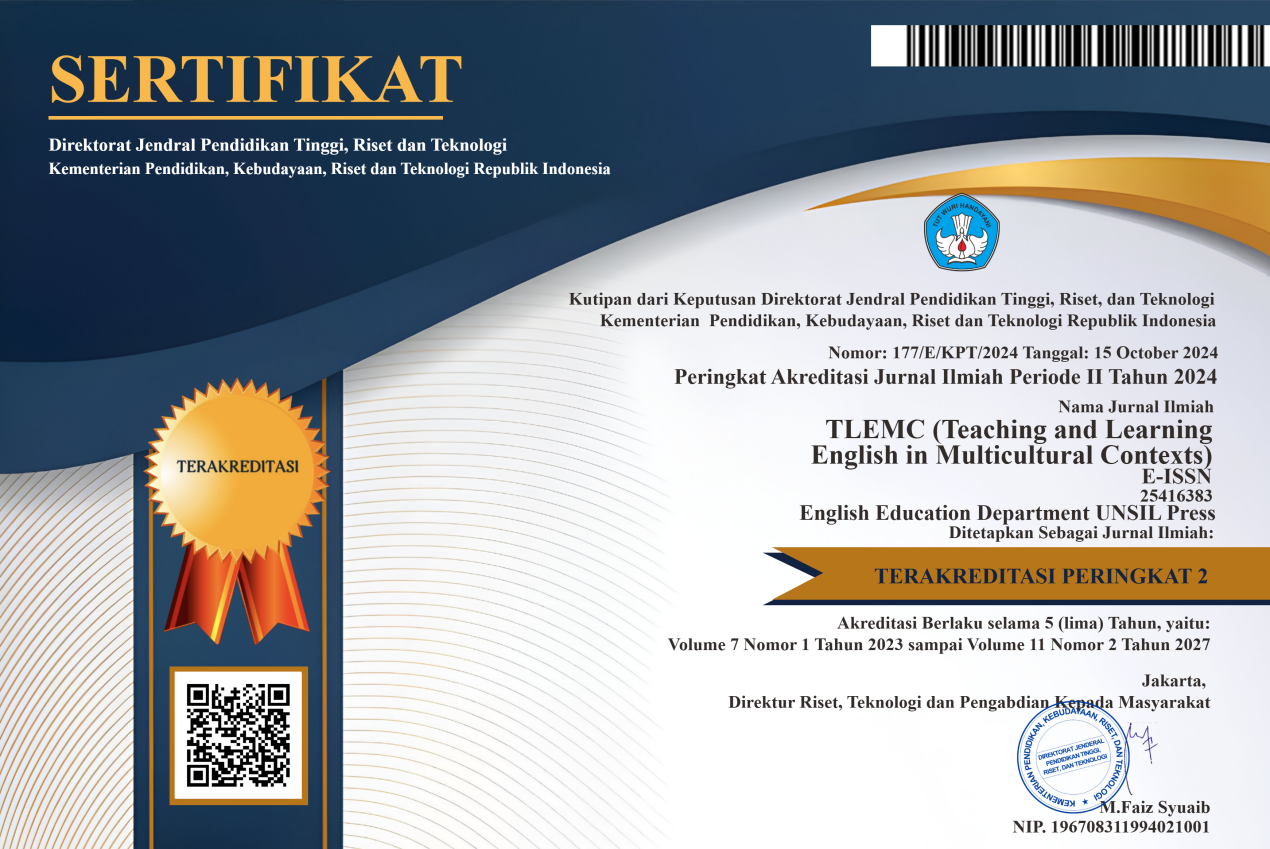A COMPARATIVE CASE STUDY OF POSTER PRESENTATION AND CLASSROOM PRESENTATION
Abstract
Full Text:
PDFReferences
Amineh, R.J. & Davatgari, H. (2015). Review of Constructivism and Social Constructivism. JSSLL Journal, 1(1). pp. 9-16.
Brock, S. & Joglekar, Y. (2011). Empowering PowerPoint: Slides and Teaching Effectivenenss. Interdisciplinary Journal of Information, Knowledge, and Management, 6. pp. 85-92.
Büyükduman, I. &Şirin, S. (2010). Learning Portfolio (LP) to Enhance Constructivism and Student Autonomy. Procedia Social and BehavioralSciences, 3 (2010) 55–61.
Caffarella, R.S. & Merriam, S.B. (1999). Perspectives on Adult Learning: Framing Our Research. 40th Annual Adult Education Research Conference Proceedings. Nothern Illionis University.
DuFon, A.M. (2002). Video Recording in Ethnographic SLA Research: Some Issues of Validity in Data Collection. Language Learning and Technology, 6(1). pp. 40-59.
Epçaçan, C. (2013). Examination of texts of secondary school turkish schoolbooks in terms of constructivism approach. Procedia - Social and Behavioral Sciences116. pp. 5105 – 5114.
Esnaashari, et al. (2015). Investigation of Audience Interaction Tools from the Perspective of Activity Theory. Australasian Conference on Information Systems. pp. 1-11.
Ferreira, D. & Prichard, C. (2014). The Effects of Poster Presentations and Class Presentations on Low-Proficiency Learners. TESOL Journal, 5(1). pp. 172-185.
Gillies, R. M. (2007). Cooperative Learning: Integrating Theory and Practice. United States of America: Sage Publications.
Goodrick, D. (2014). Comparative Case Studies, Methodological Briefs: Impact Evaluation 9, UNICEF Office of Research, Florence.
Ilic, D. & Rowe, N. (2015). What is the Evidence that Poster Presentations are Effective in Promoting Knowledge Transfer? A State of the Art Review. Health Information & Libraries Journal, 30, pp. 4–12.
Manara, C. (2007). The use of L1 support: Teachers’ and students’ opinions and practices in an Indonesian context. The Journal of Asia TEFL, 4(1), 145-178.
Rahmawati, A., Pupah, E. M., Andriani, N. F., Amalia, N., & Lismanto, T. I. D. Micro Interactional Analysis on Poster Presentation: A Case Study in an Indonesian Higher Education.
SerafÃn, ÄŒ., Dostál, J., & Havelka, M. (2015). Inquiry-Based Instruction in the Context of Constructivism. Procedia-Social and Behavioral Sciences, 186, 592-599.
Susskind, J. E., (2005). PowerPoint’s Power in the Classroom: Enhancing Students’ Self-Efficacy and Attitudes. Computers and Education 45. pp. 203-215.
Wagner P., Malisz Z., & Kopp S. (Eds.) (2014). Special issue on Gesture and Speech in Interaction. Speech Communication, 57.
Widodo, H.P., (2009). Key Issues in Teaching EFL/ESL Intensive Reading: A Videotaped Self-Observation Report. The Journal of Effective Teaching, 9(3), pp. 38-58.
Widodo, H. P., (2016). Engaging Students in Literature Circles: Vocational English Reading Programs. Asia-Pacific Edu Res, 25(2), pp. 347–359.
Yussof, Y. M., Jamian, A. R., Roslan, S., Hamzah, Z. A. Z., & Kabilan, M. K. (2012). Enhancing reading comprehension through cognitive and graphic strategies: A constructivism approach. Procedia-Social and Behavioral Sciences, 64, 151-160.
Zhang, Q., & Kou, Q. (2012). The Course Research for the Software Program Based on the Constructivism Teaching Theories. Physics Procedia, 25, 2294-2297.
DOI: https://doi.org/10.37058/tlemc.v2i2.901
Refbacks
- There are currently no refbacks.
INDEXED BY:
This work is licensed under a Creative Commons Attribution-NonCommercial-ShareAlike 4.0 International License.
![]()
TLEMC (Teaching and Learning English in Multicultural Contexts)
Program Studi Pendidikan Bahasa Inggris
Fakultas Keguruan dan Ilmu Pendidikan
Universitas Siliwangi
Jl. Siliwangi No. 24 Kota Tasikmalaya - 46115
email: tlemc@unsil.ac.id





